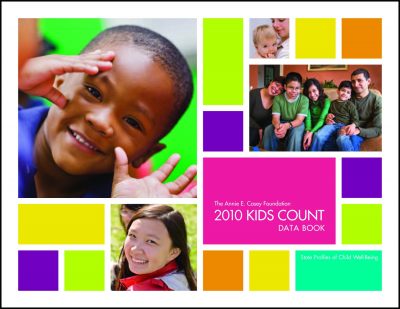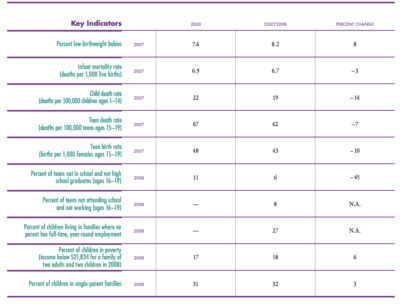Summary
The KIDS COUNT Data Book is an annual publication that assesses child well-being nationally and across the 50 states. The 2010 report ranks states on 10 indicators that reflect a wide range of factors affecting the well-being of children, particularly health, adequacy of income, and educational attainment. Based on a composite index of the 10 indicators, the three highest ranked states for child-being overall were New Hampshire, Minnesota and Vermont; the three lowest ranked states were Mississippi, Louisiana and Arkansas. At the national level, child well-being stagnated since 2000 after improving in the late 1990s. Due to time lags in data availability, this report relies primarily on data collected in 2007 and 2008, with some of the measures reflecting what happened in the prior year. Therefore the findings do not capture the effects of the economic downturn on families and children, which were largely felt well into 2008 and in 2009.









